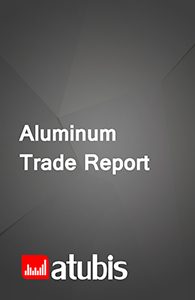Oman’s Aluminum Casting Parts Market Outlook Report
475,000 ₺
- EUR: 9,733€
Aluminum casting parts are part of the downstream supply chain of the aluminum industry; raw materials for the sector include both primary and secondary sources. One of the unique properties of aluminum in addition to the high specific strength and its high electrical and thermal conductivity, is the relatively low melting point that makes casting possible at low costs. Aluminum casting parts are produced using a variety of processes. Among these, pressure die casting and permanent mold casting are the most common. Sand casting also takes a considerable share of the market owing to low initial cost requirements.
The possibility of casting aluminum into complex shapes has translated into wide applications of casting parts in various industries. On a global scale, the automotive industry is the largest consumer of aluminum casting parts; however, there is no operating auto sector in Oman. Notwithstanding, auto parts still account for a significant share of the production and consumption of aluminum casting parts.
Product Description
With a per-capita GDP of $32,400 in 2019, Oman was the fifth largest economy in the region that year, behind Qatar, the United Arab Emirates, Bahrain, and Saudi Arabia. The country’s economy has steadily grown over the past years, and according to the Oman Vision 2040, economic growth is expected to continue over the coming years. The country’s logistical location that connects the Gulf Cooperation Council (GCC) countries to the world is one of the major factors in expanding its relations and trade with other countries; the free trade agreement with the US since 2009 is one example. Oil and petrochemicals account for a major portion of the country’s exports. In 2019, about 70% of the country’s total export revenues came from oil and oil-related products. Iron and steel as well as organic chemicals are also major contributors to the country’s total exports. The aluminum industry has moved up to the fifth place in the country’s exports and has had significant growth and development in downstream capacities over the recent years. A considerable portion of downstream capacities are located near the country’s primary smelter Sohar, which has an annual capacity of 375 thousand tonnes; this makes hot metal easily available to downstream producers, reducing their costs.
Market drivers of Oman’ aluminum casting parts
Oman has one of the largest auto markets in the Middle East. Per-capita consumption of cars in the country is above that of Saudi Arabia and Iran. As the number of existing cars increases, demand for maintenance (also known as the aftermarket) is also growing. Thus, the country is moving towards new parts, rather than new cars; this can drive demand for aluminum casting parts.
Oman reported its first case of Covid-19 in late March 2020. Before long, in April, social distancing and lockdowns were implemented. As a result, the country’s mobility index dropped more than 30%. As the pandemic continued to spread, lockdowns were extended into mid-April, but activities were gradually resumed under certain protocols. Lockdowns are expected to continue, significantly disrupting industrial performance and eventually leading to a decline in demand for aluminum semis; a recovery might be likely in the near term.
Overview of Oman’ aluminum casting parts market
Despite the growth over the past years, the production of aluminum casting parts in Oman has slowed down over the recent years. As demand for new auto parts increases and existing cars age, demand for aluminum casting parts is expected to increase, especially in auto parts. Thus, new capacities are expected to be built, leading to higher output. However, the current economic conditions due to the coronavirus will defer that scenario at least until the medium term.
Breakdown of Oman’ aluminum casting parts market
Domestic demand for aluminum casting parts in the forecast timeframe as well as the previous period has been broken down using three factors. The first factor breaks down the market into three categories based on alloy material: commercially pure aluminum, heat-treatable alloys, and non-heat-treatable alloys. Past and future trends for each type of material have been analyzed. Heat-treatable alloys hold the largest share of the market. In the second breakdown, products are distinguished based on production processes: die casting, permanent mold casting, sand casting, and other casting methods, with die casting and permanent mold casting taking the largest share in the market. Finally, using the third factor, aluminum casting parts are categorized based on their applications in different industries. The construction sector is the largest consumer of aluminum casting parts in Oman.
Key players in Oman’ aluminum casting parts market:
- Oman Aluminium Cast LLC (OAC)
- Synergies Castings
Additional Information
| Industry | Aluminium Casts |
|---|---|
| Region | Oman |
| Report Type | Industry Report |
Specifications
| Report Attribute | Details |
| The base year for estimation | 2019 |
| Historical data | 2009-2018 |
| Forecast period | 2020-2025 |
| Quantitative units | Value in USD and Volume in Tonne |
| Report coverage | Market Overview, Dynamics, Market Outlook, Risks to Forecast, Consumer Market, Industry Overview, Market Landscape, Competitive Landscape, Market Attractiveness, External Macro Environment Analysis |
| Segments covered | Composition, Type, Application |
| Pricing and purchase options | Please explore our purchase options to meet your exact research needs. |
Reasons to Buy
- Recognize the geographical distribution of import demand
- Identify the current and future key players of the trading market
- Achieve a better insight on potential target markets
- Understand the behavior of major suppliers/customers either globally or regionally
- Identify competitors as a feed for market analysis
Table of Content
- Executive summary
- Introduction
- Objective
- Market under study
- Product
- Product specifications
- Consumption structure
- Applications
- Physical properties
- Subjects discussed
- Geographical scope under study
- Study timeframe
- Study currency
- Potential audience
- Market dynamics
- Market drivers
- Restraints
- Opportunities
- Challenges
- Market overview
- Market size
- Industry capacities
- Existing capacities
- Capacity distribution
- Geographical distribution of capacities
- Future capacities
- Existing capacities
- Output
- Output trends
- Operating rates
- Consumption
- Consumption trend
- Consumption Share of domestic product
- Trade
- Exports
- Imports
- Trade balance
- Market balance
- Market breakdown by product type
- Market breakdown by product type
- Market breakdown by application
- Inventory
- Producers inventory
- Consumers inventory
- Traders inventory
- Market outlook
- Market factors
- Raw materials
- Costs and prices
- Competition
- The government
- Other factors
- Future scenarios
- Risks to forecast
- Market factors
- Consumer markets
- End-user markets
- Building construction
- Infrastructure construction
- Transportation manufacturing
- Industrial equipment manufacturing
- Durable goods manufacturing
- Consumable goods manufacturing
- Direct consumer markets
- Major Direct consumers
- Existing capacities
- Drivers
- Major Direct consumers
- End-user markets
- Export potentials
- Destinations
- Trade and insurance costs
- Import market suppliers
- Producers potential share
- Destinations
- Industry overview
- Raw materials
- The supply volume of raw materials
- Supply channels of raw materials
- Raw materials procurement costs
- Cost structure of producers
- Production cost curve
- Industry value added
- Generated new scrap
- Technology
- Raw materials
- Market landscape
- Domestic sales markets
- Pricing in the domestic market
- Potential domestic demand
- Trade agreements for imports
- Foreign suppliers
- Foreign sales market
- Prices
- Potential markets overview
- Trade agreements for exports
- Foreign customers
- Domestic sales markets
- Competitive landscape
- Producers
- Company profile
- Revenue structure
- Gross profit margins
- Capacity, output and sales
- Consumers
- Company profile
- Revenue structure
- Gross profit margins
- Capacity, output and sales
- Producers
- Market attractiveness
- Industry rivalry
- Threat of new entrants
- Threat of substitutes
- Bargaining power of buyers
- Bargaining power of suppliers
- Conclusion of Porter analysis
- PESTEL analysis
- Political factors
- Economic factors
- Social factors
- Technology factors
- Environmental factors
- Legal factors
- SWOT analysis
- Large-scale companies with favorable conditions
- Short-term strategies
- Long-term strategies
- Large-scale companies with unfavorable conditions
- Short-term strategies
- Long-term strategies
- Small enterprises with favorable conditions
- Short-term strategies
- Long-term strategies
- Small enterprises with unfavorable conditions
- Short-term strategies
- Long-term strategies
- Large-scale companies with favorable conditions



